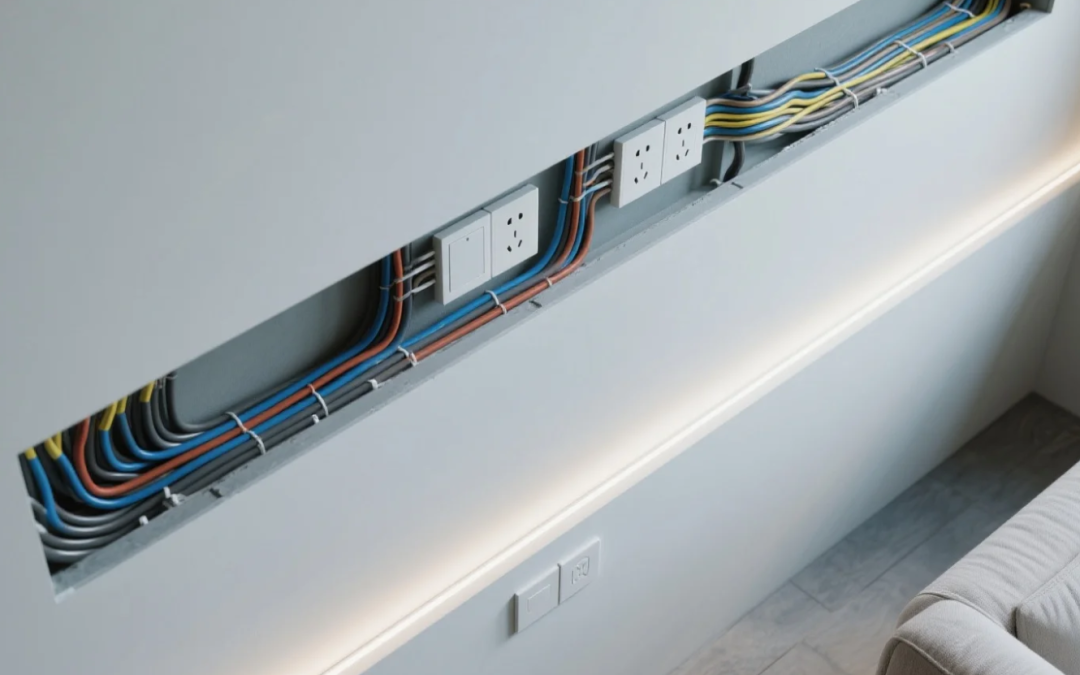Are you considering undertaking some DIY projects in your home? That is fantastic. There is a genuine sense of achievement in repairing things on your own. However, when it pertains to electrical work, let us be honest—it is an entirely different matter. It involves more than merely ensuring the lights function; it is crucial to guarantee the safety of your home.
In our nation, there exists a framework of regulations governing all electrical matters, established by the national energy commission. These regulations are intended to safeguard you, your family, and your residence from unpleasant incidents such as fires or electrical shocks. Many individuals, including novice professionals, often overlook several essential aspects. Therefore, let us discuss some frequent mistakes that you should certainly be aware of.
The No-No’s of Wiring
1. Too Many Gadgets, One Plug Point
You are aware of the situation—you have the kettle, toaster, and microwave all connected to the same outlet via an extension cord. What could possibly go wrong? Quite a bit, in fact. Overloading the circuit can cause the wires to heat excessively. The fuse box is designed to trip to avert a fire hazard, but if there is a malfunction, you could find yourself in a perilous predicament.
To keep it straightforward: Be cautious about the number of large appliances you operate simultaneously on a single circuit. If your home is older, it may be prudent to consider having additional circuits installed.
2. The Missing Safety Line
Every contemporary residence is equipped with a safety line, commonly referred to as the “earth” wire. This wire is identifiable by its green and yellow coloring. Its primary function is to serve as a protective measure for the electrical current. In the event of a malfunction, it swiftly channels the electricity to the ground, preventing potential electric shocks. A frequent error occurs when an outdated two-prong plug is connected to a three-pin socket lacking a proper earth connection. This poses a significant risk to your safety.
The general guideline is as follows: If you observe a green and yellow wire, it exists for a very important purpose. Do not disregard it.
3. Using the Wrong-Sized Wires
Consider the challenge of attempting to consume a dense milkshake using a narrow straw—it simply cannot be done. The same principle applies to electrical wires. They must possess the appropriate thickness to accommodate the volume of electricity they are conducting. Utilizing a slender wire for a high-powered device can result in the wire overheating to the point of melting and potentially igniting a fire. This discussion pertains to the brown (live) and blue (neutral) wires, where their thickness is crucial.
The fact is: Thicker wires are designed for more substantial loads. If you are uncertain, it is advisable not to make assumptions.
4. Wires Left Out in the Open
All wire connections must be securely concealed within a box. Exposing them or merely covering them with a small amount of electrical tape is highly discouraged. This practice poses a significant risk of electric shock or, even more dangerously, could lead to a fire due to sparking.
As a reminder: All connections should be properly enclosed in a box with an appropriate cover. There are no exceptions.
5. Burying the Electrical Box
This is a classic example. An electrical box serves as the junction for all the wires, and it must be readily accessible. Avoid concealing it behind a newly plastered wall or beneath a cabinet. In the event of an issue, a technician should have easy access to it.
Facilitate access: Similar to how you require a key to enter your home, it is essential to have access to these boxes for maintenance purposes.
The Best Advice: Consult a Professional Friend
At the conclusion of the day, electrical tasks are not to be taken lightly. A minor error can result in significant repercussions. Although it may be appealing to save some money on a do-it-yourself project, the safety of your home and all its occupants is paramount.
An individual who has received proper training is well-versed in these regulations. They are knowledgeable about the various color codes, the 230V standard, and all the intricate details that ensure the safety of your home. For any substantial wiring projects, it is always advisable to engage a professional. This is the prudent and secure choice to make.
Conclusion
As you can observe, dealing with electricity is not something to take lightly. The regulations regarding wire dimensions, appropriate grounding, and the necessity of enclosures are not merely bureaucratic hurdles. They serve as essential guidelines to protect your family and residence from the dangers of fires and electrical shocks.
While it may be tempting to attempt the work yourself, even a minor error can result in significant issues later on. A qualified electrician possesses the necessary training and knowledge to ensure that your home’s electrical system is a bastion of safety, providing you with complete peace of mind. Consider it an investment in the long-term integrity of your home and the safety of your family. When it comes to electrical matters, always opt for the secure option and entrust the task to professionals.

